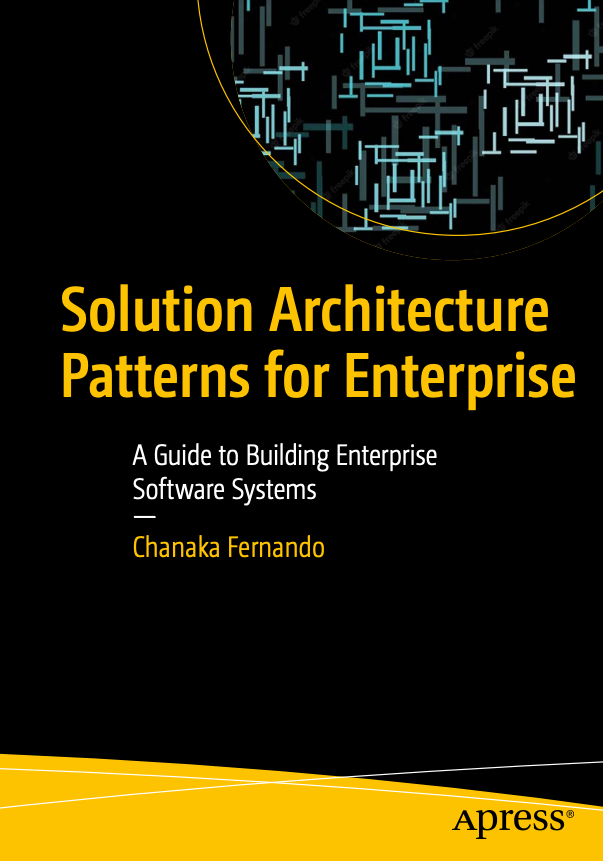After years of effort, I am thrilled to announce the release of my second book “Solution Architecture Patterns for Enterprise”.
How did it start?
It all started a few years ago when I decided to share my experiences through a GitHub repository on Solution Architecture. Eventually, it became a popular resource within GitHub and then I decided to write a book with greater details. Here I am today, releasing the book that contains a set of solution architecture patterns that can be used to build enterprise software systems.
Who this book is for?
Solution Architecture is a domain in that people from different backgrounds (majors) come and work. This book can be used as a getting-started guide for novel Solution Architects and a pattern guide for experienced folks. For University Students, this can be used as reference material to learn about Solution Architecture which is hardly taught at universities yet a considerable area of expertise in the software industry.
What is in the book?
This book contains 9 chapters covering the following topics.
- Introduction to Enterprise Software Systems
- Introduction to Solution Architecture
- Building Enterprise Software Systems with Microservice Architecture
- Building Enterprise Software Systems with Hybrid Integration Platforms
- Designing Enterprise Platforms with Event-Driven Architecture Patterns
- Securing Enterprise Software Systems
- Implementing Observability for Enterprise Software Systems
- Designing Next-Gen Enterprise Software Systems with Cloud-Native Architecture
- Industry Specific Architecture Patterns
Prerequisites before reading the book
None. This book can be read and understood by a novice as well as experienced engineers who are interested to learn about solution architecture. People from different majors work in the area of Solution Architecture and it is hard to find organized content to learn about it. This book tries to fill that gap by providing introductions to the basic concepts and then moving into technical details as quickly as possible so that all types of readers are interested in the book.
Where to buy/read?
The book is available through the following platforms.

Feedback
This is an attempt to share my experiences with the world so that someone in the other corner of the world can learn from them. I’m happy to learn from you as well so that I can improve my understanding and produce better content in the future. I welcome your feedback.
Comments
Post a Comment